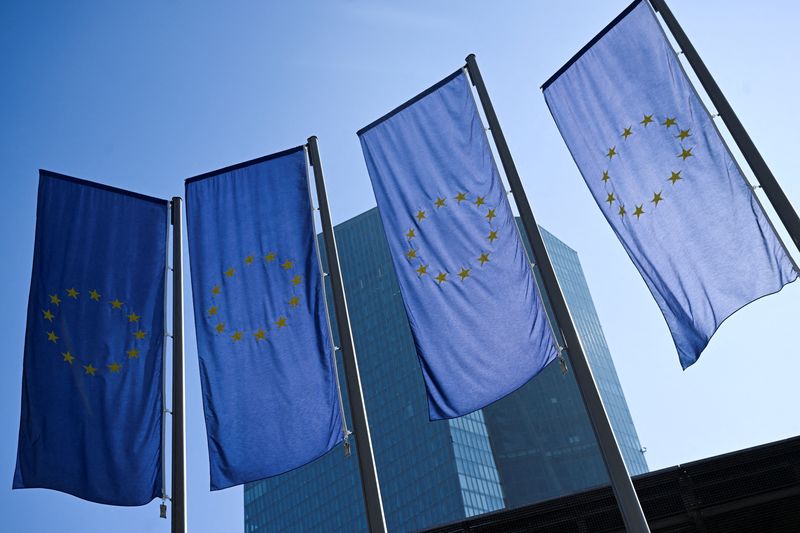By Stefano Rebaudo and Linda Pasquini
(Reuters) -Investors are increasingly pricing in a “higher for longer” interest rate environment in the euro zone, with a potential cut in March seen as a temporary blip before borrowing rates climb back above 2%.
A number of market-based measures of rate expectations indicate that investors are growing less concerned about the deflationary impact of tariffs following the recent trade deal between the United States and the European Union.
Powered by Money.com – Yahoo may earn commission from the links above.
They’re also confident that a sharp increase in fiscal spending in Germany will boost the economy, thereby reducing the need for more rate cuts in the longer term.
Several investment banks, including Goldman Sachs, have revised their forecasts, now anticipating that the European Central Bank has ended its current easing cycle.
While trade risks could still weigh on growth and inflation, these banks believe the ECB, which offered an upbeat assessment of the euro zone economy after its latest meeting, is likely to hold rates at 2% for the foreseeable future.
Erring on the side of caution, markets are pricing in the risk of a pick up in deflationary pressure early next year if tariff negotiations falter, which is showing up as an implied ECB rate cut in March.
In the meantime, the euro has risen by nearly 3% this month as investors increasingly expect the U.S. Federal Reserve to resume rate cuts in September, while the ECB stays put.
“Higher for longer” was a narrative that dominated markets in 2022 and 2023 as central banks grappled with stubborn inflation stemming from the COVID pandemic and Russia’s invasion of Ukraine.
Here are some of the market indicators that reflect its return.
ESTR FORWARDS EDGE TOWARDS 2%
Forward contracts on the ECB’s official overnight benchmark interest rate, the euro short-term rate (ESTR), imply around a 60% chance of a 25 basis point rate cut by March, and a deposit rate of 1.92% in December 2026.
This reflects traders’ assumptions about the likely path for monetary policy.
“In the short term… there is the potential of inflation undershooting. It’s a bit of Trump. It’s a bit of economic weakness,” said Carsten Brzeski, global head of macro research at ING.
“Our view is that inflation will remain structurally above 2% in the coming years, driven by fiscal spending and the restructuring of supply chains, which will increase costs for companies,” he said.
He added that policy rates could reach the upper bound of the ECB’s official 1.75% to 2.25% range for the neutral rate – that which is neither accommodative nor restrictive – and shift into tightening territory if required.
Story Continues
